“Talkie calling Walkie, how are you this morning? Over.” “Juan, I’m not playing this game, I need breakfast! Now!” Cold and rainy October mornings in Burgos were seriously not pleasant.
The only thing which could have saved the morning were our recently perfected bread hunting skills.
Since the day one of the Camino we wowed to make every lunch very tasty. Happy belly creates a powerful temporary illusion that the rest of your body is not suffering and you might just as well have a picnic. An essential ingredient of tasty Camino lunch was always today’s freshly baked bread. A yesterday’s bread does not have the desired uplifting effect. That’s why Juan and I transformed into trained dogs who can find an open bakery everywhere with an instinct of a hungry predator.
The bakery on the way out of Burgos was as perfect as I imagined it would be. It offered a wide range of sweet pastries that I have never seen before along with fresh orange juice and newspapers. When I studied at university in Olomouc, I subscribed to printed newspapers just for their smell. The smell matched perfectly with black tea and fresh loupák and together they turned any rainy morning into a pleasure. The locals in Burgos have their own trick how to stay happy in the rain. The baker smiled at us and looked outside: “What a perfect weather for collecting mushrooms!” As she was speaking, another soaked man just entered and greeted her. “Look, there he is, the king of mushrooms!” The nearby forests were indeed full of mushrooms. I recognized some of them because they grow in Slovakia too. Oh dear, how much I miss mushroom hunting…
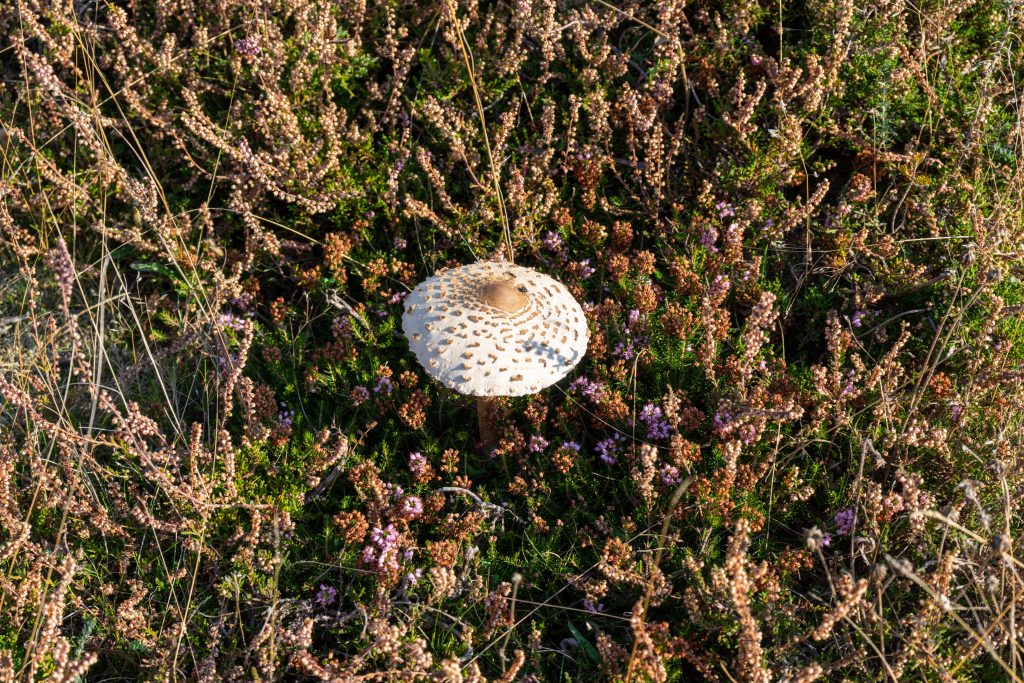
The forests were soon replaced by fields of grain and unremarkable farmlands. In the next 200 km the Camino was going to pass through La Meseta AKA The Plateau. All crops were already harvested, so the ground was golden brown as far as the eye could see. Fortunately for us, the locals were really into their bread. Once an old lady sold us yesterday’s stale hard bread and we did not notice. Since then I always squeezed any bread that I was buying. You can trick me only once! Another time in a small bakery I met a much friendlier man. He had several types of bread, all looking pretty good. I obviously couldn’t squeeze them all, so I rather asked for his recommendation. He explained that the best sandwich bread needs to be baked in a wood burning oven. Since then I have always asked for “pan de leña”. These breads were great, but none of them ever repeated the deliciousness of the old man’s bread.
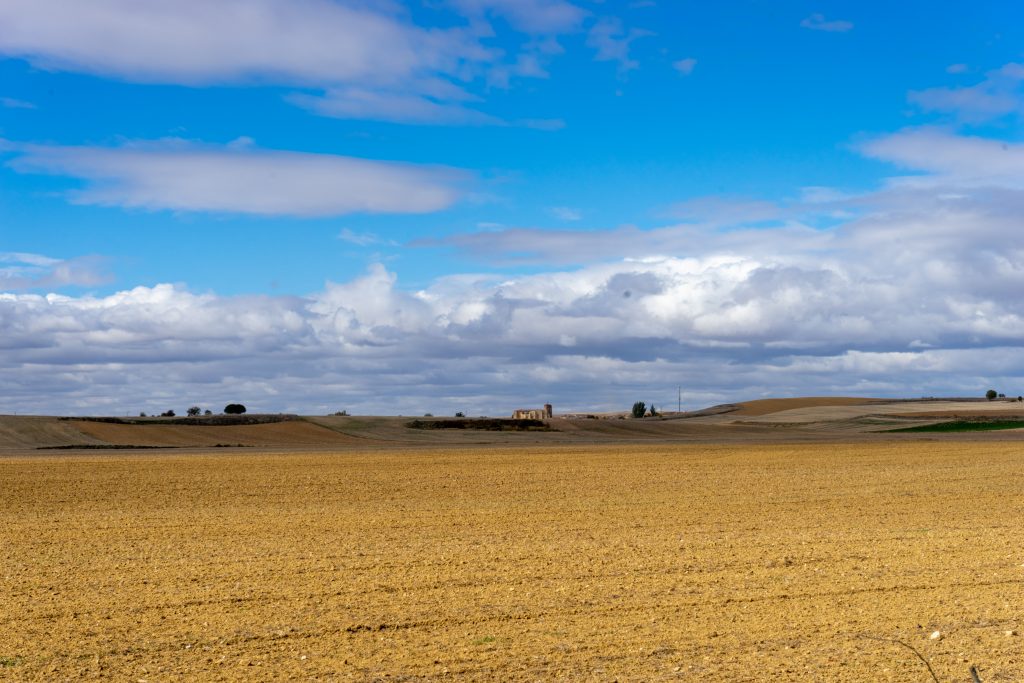
At times we passed huge sad looking fields of dried sunflowers. We kept wondering how the seeds were industrially harvested without cutting the heads off. Once the flowers dry, it’s common to tie bags around them and shake the seeds out. How many people do you need to tie bags around tens of thousands of sunflowers? Was this field really harvested manually? Why didn’t they simply cut the heads off with a machine? Does a seed-shaking machine exist? So strange. I should have asked a farmer. One member of our covid Camino family was a French man Dominic, who started walking from his house in Toulouse. Later I learned that he was a farmer and he really enjoyed snacking sugar beet from the fields.
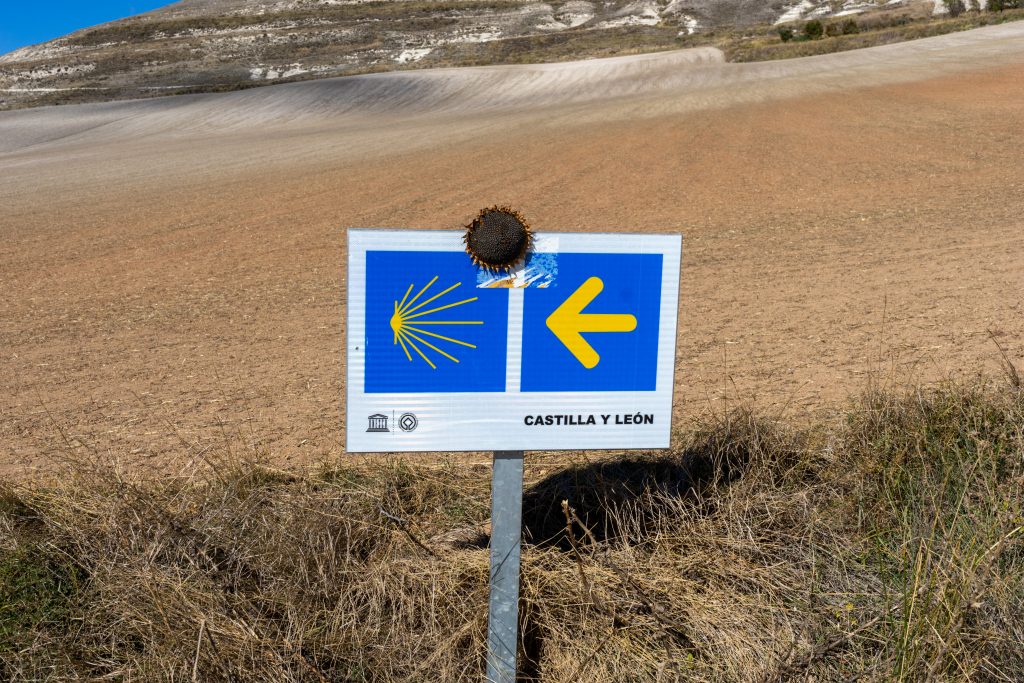
La Meseta is scarcely populated and there are hardly any places to eat. Eating in albergues was sometimes the only option. Therefore, even in covid times, we could enjoy big pilgrim dinners with all of us sitting together at one table. By all of us I mean max 15 people. One albergue in Hornillos del Camino is famous for its paella dinner. Everybody was relaxed after an easy Camino stage and the dinner, hanging out in a garden. We met two Croatian brothers who walked impressive 40 km per day. Later in the evening they revealed a secret how they stay so relaxed.
Juan smoked their secret with them and ended up dead asleep.
I expected that albergues would smell of feet, sweat and wet soil. In reality, the most dominant smell was usually a cream to ease muscle pain. A German girl Katrin had a marmot ointment so strong, that it allowed me to track her inside of buildings. She was really into an Irish guy Patrick, who was “sooo cool” to camp outside! Well, I don’t think he was cool, he must have had a pretty good sleeping bag. Katrin was determined to buy a sleeping bag too and join Patrick on his adventures in the tent. A few days later, she definitely managed to make her dream come true – we saw them walking together for a while. Although I’m not completely sure that Patrick enjoyed her attention.
Walking through La Meseta is physically hard because sometimes there is absolutely no shade nor water for 15 km. That’s usually not a problem – pilgrims who came this far are determined to face any weather. The temperature in La Meseta in October was very predictable – cold 4-5 °C in the mornings and up to 25 °C in the afternoon. La Meseta mentally challenges the pilgrims by days of silence, easy flat terrain and a lack of change. There are rarely any landscape surprises and you only have to climb one small hill. Having a walking partner on this part of the Camino can be a mental life savior. Pilgrims must be asking themselves all the time: “Why am I even doing this, it’s boring!”
However, this is exactly why I loved the Camino so much. I discovered the long forgotten pleasure of not thinking!
As a PhD candidate I was trained to think months in advance. Quite often my brain refused to stop planning even during vacation. On the Camino, any planning was done only a day in advance. There was nothing left to organize during the walk. A sweet daily walking routine. By this time we knew how to entertain ourselves and how much water we needed. But still, we often thought about our friend Kawen who calls the Camino a “stupid long walk”.
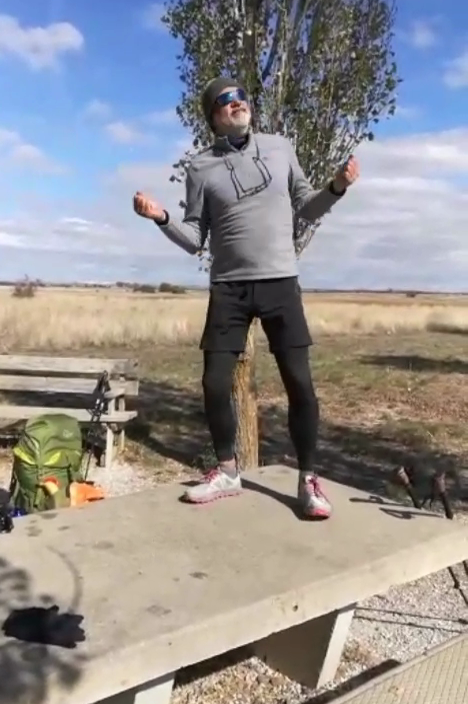
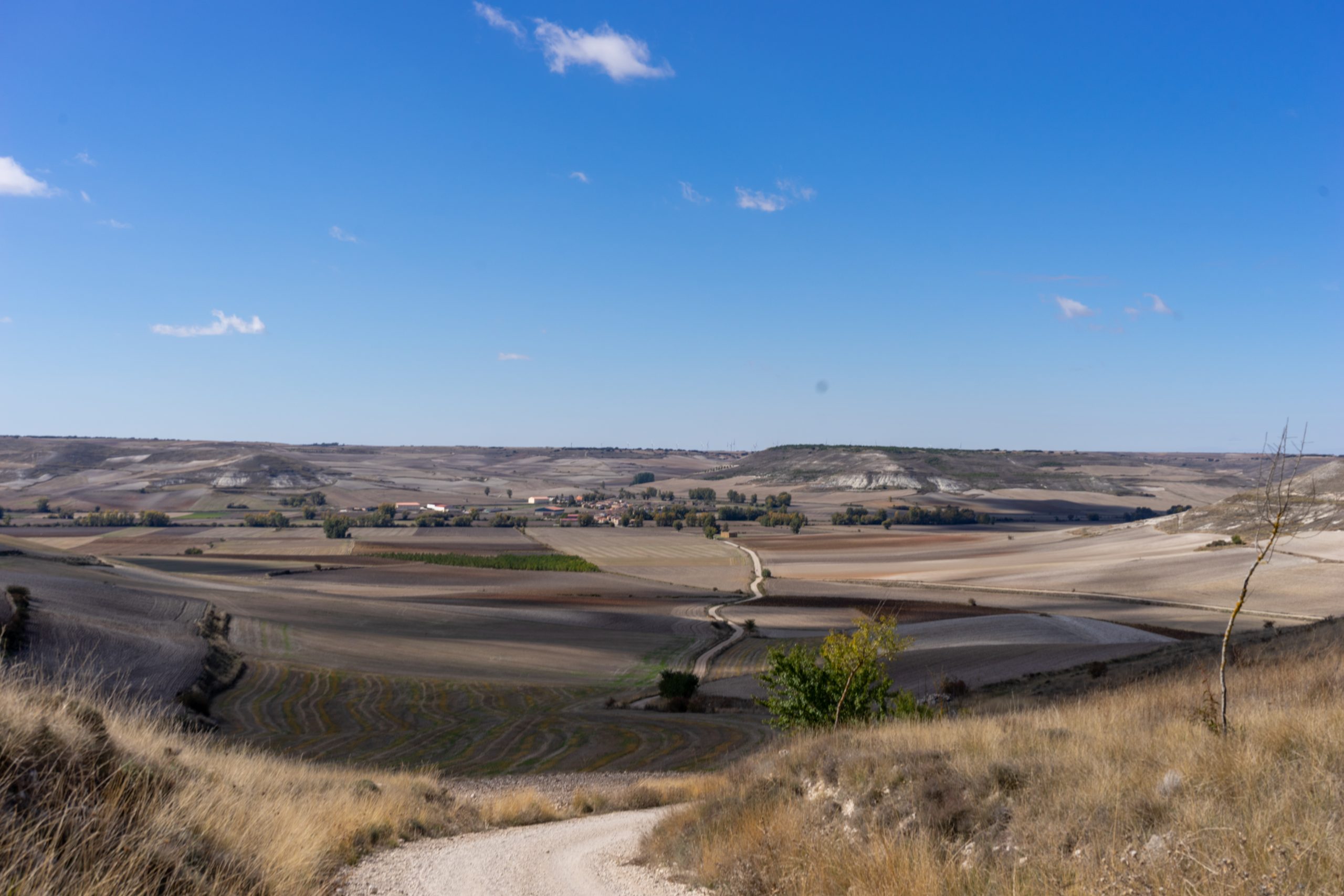
Leave a Reply